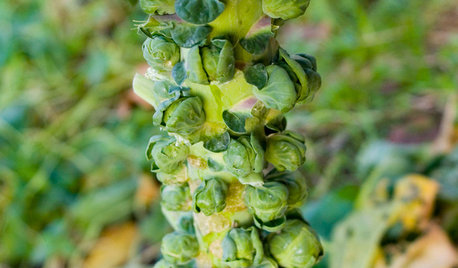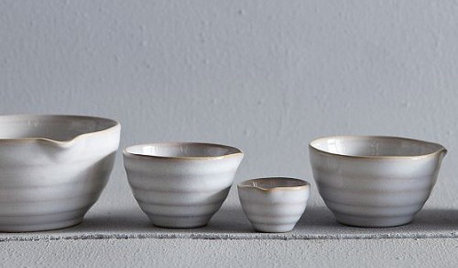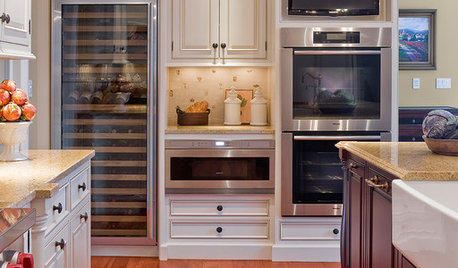How to keep tube birdfeeder bottom from growing sprouts?
brit5467
14 years ago
Related Stories

COOL-SEASON CROPSCool-Season Vegetables: How to Grow Brussels Sprouts
If you love 'em (you know who you are), fall and spring are the right times for planting these veggies in your edible garden
Full Story0

KITCHEN DESIGNGuest Picks: Sprouted Kitchen Must-Haves
Sara of Sprouted Kitchen Shares Her Essentials Tools for Good Cooking
Full Story
EDIBLE GARDENSHow to Grow Your Own Sweet Summer Crops
This guide will help any gardener get started on growing the freshest warm-season veggies and berries for summer
Full Story
FARM YOUR YARDHow to Grow Vegetables in Containers
Get glorious vegetables and fruits on your patio with a pro’s guidance — including his personal recipe for potting mix
Full Story
EDIBLE GARDENSSummer Crops: How to Grow Tomatoes
Plant tomato seedlings in spring for one of the best tastes of summer, fresh from your backyard
Full Story
KITCHEN DESIGNGlued to the Tube: 14 Ways to Put a TV in the Kitchen
If you must, here's how to work a flat screen into your kitchen design
Full Story
MOST POPULARSummer Crops: How to Grow Sunflowers
Savor snack-tastic sunflower seeds once the radiant blooms have faded — if the birds have saved you any, that is
Full Story
EARTH DAYGrow a Beautiful Garden With Ecofriendly Greywater
Reducing home water waste means lower bills and a healthier planet. Here's how to set up a greywater home irrigation system that can help
Full Story
FALL GARDENING5 Fall Fruits You Can Grow in Containers
Brighten your porch or patio with a potted pomegranate, kumquat, blueberry bush or another great fall fruit
Full Story
FARM YOUR YARDCool-Season Vegetables: How to Grow Lettuce
Leaf, butterhead, crisphead or romaine — lettuce is best harvested in the cool weather of spring and fall
Full Story





maifleur01
maifleur01
Related Professionals
West Milford Landscape Architects & Landscape Designers · Citrus Heights Landscape Architects & Landscape Designers · Barrington Hills Landscape Architects & Landscape Designers · Marco Island Landscape Architects & Landscape Designers · Marina Landscape Architects & Landscape Designers · Mitchellville Landscape Architects & Landscape Designers · Suffern Landscape Architects & Landscape Designers · Eagle Landscape Contractors · Fruit Heights Landscape Contractors · Gloucester Landscape Contractors · Lynn Landscape Contractors · North Potomac Landscape Contractors · Forney Swimming Pool Builders · Montclair Swimming Pool Builders · Placentia Swimming Pool Buildersjustuscountryfolks
brit5467Original Author
lazy_gardens
brit5467Original Author